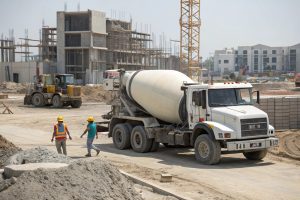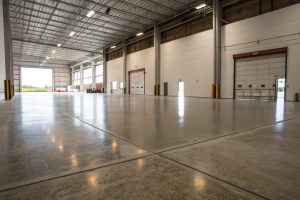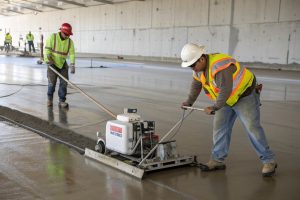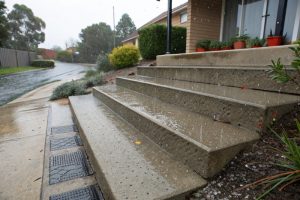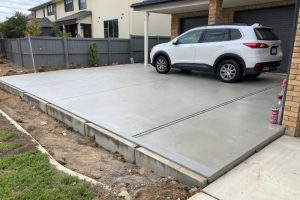Beautiful Exposed Aggregate Concrete in Canberra
Your Local Canberra Exposed Aggregate Specialists
When you’re dealing with Canberra’s freeze-thaw cycles, UV-intense summers, and those sudden storm downpours, exposed aggregate gives you the natural drainage, slip resistance, and weather durability that plain concrete simply can’t match. Plus, with the variety of local aggregates available – from Murrumbidgee river stones to crushed granite from regional quarries – you can create something that perfectly matches your home’s style and the natural landscape around us.
We’ve been specializing in exposed aggregate finishes across Canberra for over two decades, working with homeowners in suburbs like Forrest, Deakin, and Campbell to create outdoor spaces that actually enhance their daily lives. Whether you’re looking at a new driveway that’ll handle Canberra’s temperature swings, pool surrounds that stay safe when wet, or entertaining areas that complement your home’s architecture, exposed aggregate offers solutions that make sense for our unique climate and lifestyle.
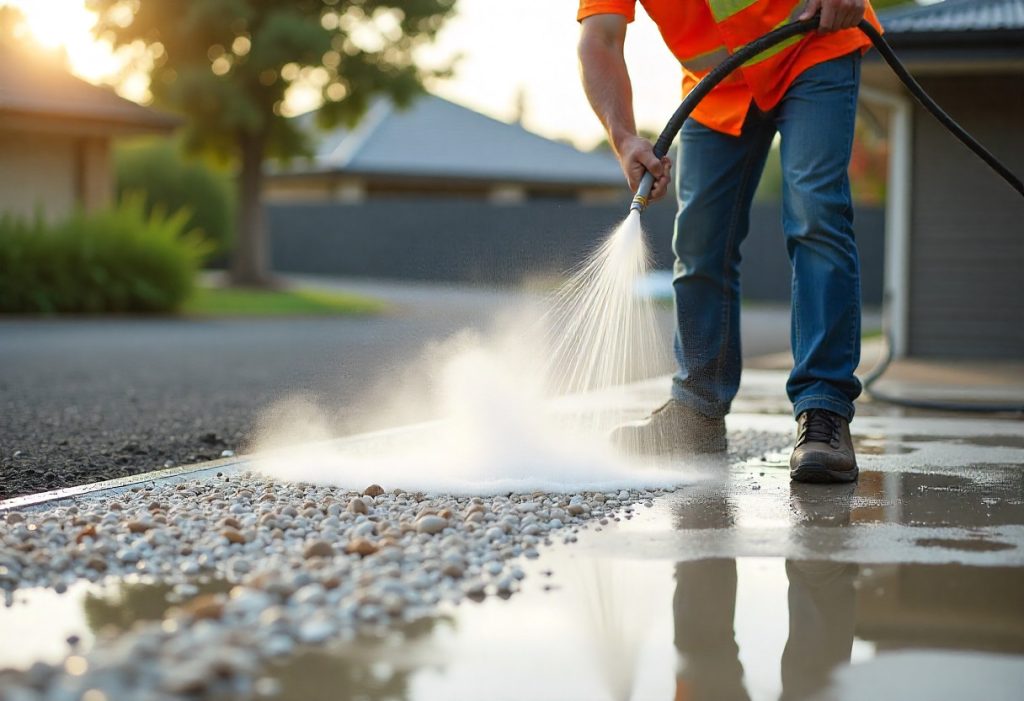
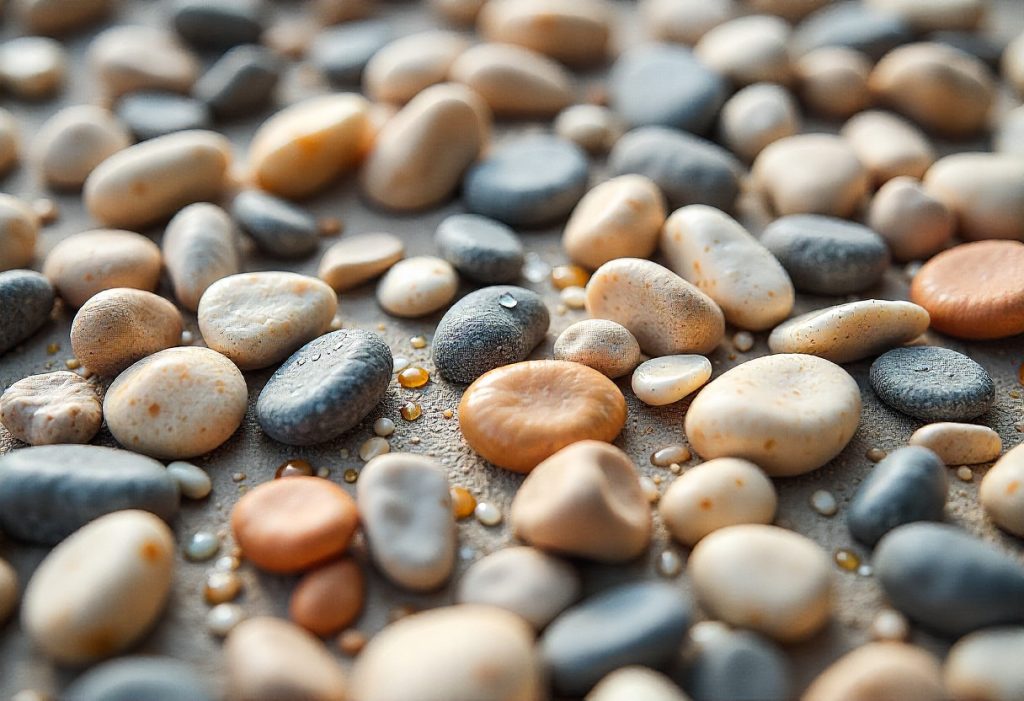
What is Exposed Aggregate Concrete?
Think of exposed aggregate as concrete’s way of showing off its natural beauty. Instead of that flat, monotonous gray surface you see everywhere, exposed aggregate reveals the decorative stones, pebbles, and crushed materials that are mixed right into the concrete itself. It’s like unwrapping a present – the beautiful stuff was there all along, just hidden under a thin layer of cement paste.
Here’s what makes exposed aggregate different from your standard concrete:
- Natural stone appearance – Instead of plain gray, you get the rich colors and textures of real stone
- Textured surface – The exposed stones create a naturally slip-resistant finish
- Customizable look – Choose from dozens of aggregate types to match your style
- Enhanced durability – The hard stone surface actually wears better than plain concrete
- Better drainage – The textured surface allows water to flow more naturally
Concrete Aggregate Options Available in Canberra
Local River Pebbles and Stones
The Murrumbidgee River system gives us some of the most beautiful rounded pebbles you’ll find anywhere. These smooth, water-worn stones come in gorgeous earth tones – creams, grays, soft browns, and even hints of pink. They’re perfect for that sophisticated, resort-style look that so many of our Red Hill and Yarralumla clients love. The natural rounding means they’re comfortable underfoot around pools and entertaining areas.
Crushed Granite and Basalt Options
For a more contemporary, angular look, our regional granite quarries provide stunning options. The crushed granite from Captains Flat gives you those sharp, crystalline faces that catch light beautifully, while basalt from the Monaro region offers deep charcoal tones that work perfectly with modern Canberra architecture. These harder stones are ideal for driveways that need to handle heavy vehicle traffic.
Recycled Glass Aggregates
This is where things get really interesting. We source recycled glass from local bottle crushing facilities, and the results are stunning. The glass pieces catch and reflect light throughout the day, creating surfaces that almost seem to glow.
Colored Stone Selections
When clients want something specific to match their landscaping or home exterior, we work with suppliers across the ACT and southern NSW to find exactly the right color palette. Red ironstone from the Braidwood area, creamy sandstone from local quarries, even imported options when the project calls for something special.
Regional Quarry Materials
Working locally means we can often take clients to see the actual stones before they make their decision. There’s nothing like seeing how Cooma river rock looks in different light conditions, or feeling the texture of crushed quartz from the Captains Flat quarries.
Application Areas for Exposed Aggregate
The natural texture invites you to slow down and actually notice your landscaping. We often use smaller 10mm aggregates for pathways – they’re comfortable to walk on barefoot but still provide that gorgeous visual interest.
The natural drainage means water doesn’t pool after those sudden summer storms, and the varied texture adds visual warmth that makes spaces feel more intimate and welcoming.
Benefits and Advantages of Exposed Aggregate
Superior Slip Resistance for Canberra Winters
Those frosty mornings we get from May through September can turn smooth concrete into an ice rink, but exposed aggregate’s textured surface provides natural grip even when wet or frosty. The stones create tiny channels that help water drain away while giving your feet something to grip onto. It’s like having thousands of tiny tread patterns built right into the surface.
Natural Drainage Properties
Anyone who’s lived through a Canberra storm knows how quickly our weather can change. One minute it’s sunny, the next you’ve got 20mm of rain in half an hour. Exposed aggregate handles this beautifully because the textured surface allows water to flow naturally around and between the stones instead of sheeting off in dangerous streams.
Low Maintenance Requirements
Here’s something that really surprises people – exposed aggregate is actually easier to maintain than plain concrete. Those natural stone colors hide dirt, dust, and minor stains that would be obvious on gray concrete. A simple hose-down every few months is usually all it needs.
The natural variation in colors and textures means your surfaces stay looking good without constant cleaning and pressure washing.
UV Resistance for Harsh Australian Sun
Canberra’s summer sun is no joke – we regularly hit 35-40 degrees, and that UV exposure can fade and degrade surfaces over time. The natural stones in exposed aggregate are basically immune to UV damage. Granite, basalt, river pebbles – they’ve been sitting in harsh sunlight for millions of years. A few decades of Canberra summers aren’t going to hurt them.
Durability in Freeze-Thaw Conditions
Our winter temperature swings – from below zero at night to 15 degrees during the day – can be brutal on concrete surfaces. Plain concrete expands and contracts, leading to cracks and surface damage. But exposed aggregate’s varied surface actually helps dissipate these stresses naturally.
If you’re ready to take the next step and get started on your concrete job with Canberra’s best concreter, contact us now for a no obligation quote.
Construction Process for Exposed Aggregate
1. Site Preparation & Formwork: Excavate to the correct depth, ensure proper drainage, and set up formwork for clean edges. Base preparation is crucial, as exposed aggregate highlights every imperfection.
2. Concrete Placement & Initial Finishing: Use a mix with ~30% more aggregate than standard. Screed and float the surface to bring just enough cement cream to cover the stones without making washing difficult later.
3. Surface Retarder Application: Apply a retarder to slow curing of the top 3–6mm. Timing is critical and adjusted for Canberra’s temperature and humidity to ensure proper stone exposure.
4. Washing & Exposing: After initial curing, wash the surface with high-pressure water and brushes to remove the retarded cement paste. This exposes the stones evenly without dislodging them.
5. Quality Control: Test small areas first to ensure consistent exposure, texture, and color. Aim for 70–80% of each stone visible across the surface.
6. Sealing & Protection: Once cured (7–14 days), apply a high-quality acrylic sealer to enhance stone colors and protect against stains and weather, ensuring long-term durability.
Frequently Asked Questions About Exposed Aggregate in Canberra
Unfortunately, no – this is one of those situations where timing really matters. Five hours after pouring, your concrete is still in that critical early curing stage where rain can seriously damage the surface. I learned this lesson the hard way on a job in Tuggeranong years ago when an unexpected storm hit. The raindrops left permanent pockmarks in the surface, and we had to start over completely.
In Canberra, with our unpredictable weather patterns, I always check the Bureau of Meteorology forecast at least 48 hours ahead. If there’s any chance of rain in the first 24 hours, we’ll reschedule. It’s better to wait a week than to have a permanently damaged driveway.
Absolutely not. Pouring concrete in active rain is asking for trouble, and with exposed aggregate, the problems are even worse. The extra water dilutes the surface mix, making it nearly impossible to get proper aggregate exposure later. Plus, Canberra’s clay soils become a muddy mess when wet, making it dangerous for our crews and equipment.
We’ve had clients from Deakin and Red Hill ask us to work through light drizzle because they’re eager to get their project finished, but I always explain that waiting for clear weather saves money in the long run. A ruined pour costs far more than a delayed start.
Sealing does create a slightly smoother feel, but you’ll still have all that beautiful texture from the stones. Think of it like putting a thin protective coating over sandpaper – it’s still textured, just not quite as rough. This is actually perfect for Canberra families because you get the slip resistance for safety but without that harsh, scratchy feeling when kids are running around barefoot during summer.
Yes, but it’s tricky. Those scorching Canberra summer days when we hit 40+ degrees actually make concrete cure faster – sometimes too fast. The surface can skin over before we’ve properly finished it, making aggregate exposure really difficult. On days like this, we start work at 5 AM to beat the heat, use cooler water in our mix, and sometimes add retarders to slow things down.
Here in Australia’s harsh climate, especially in Canberra where we get extreme temperature swings, I only use high-quality acrylic sealers designed for our conditions. The process is straightforward – clean the surface thoroughly, let it dry completely, then apply thin, even coats with a low-pressure sprayer or roller.
The key difference for Australian conditions is choosing sealers that can handle our UV intensity and temperature variations. I’ve found that European or American products often fail after just one Canberra summer because they’re not designed for our extreme conditions.
